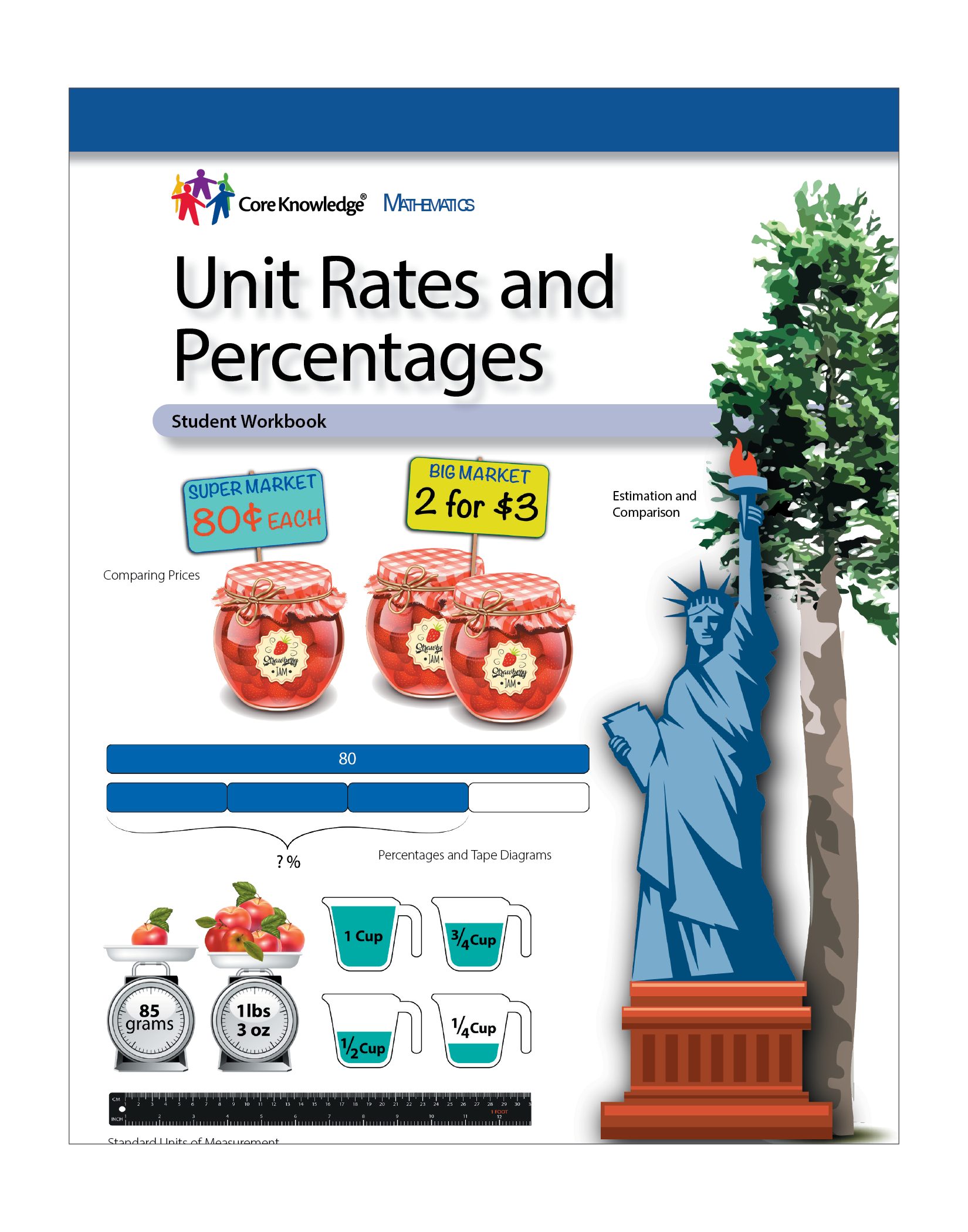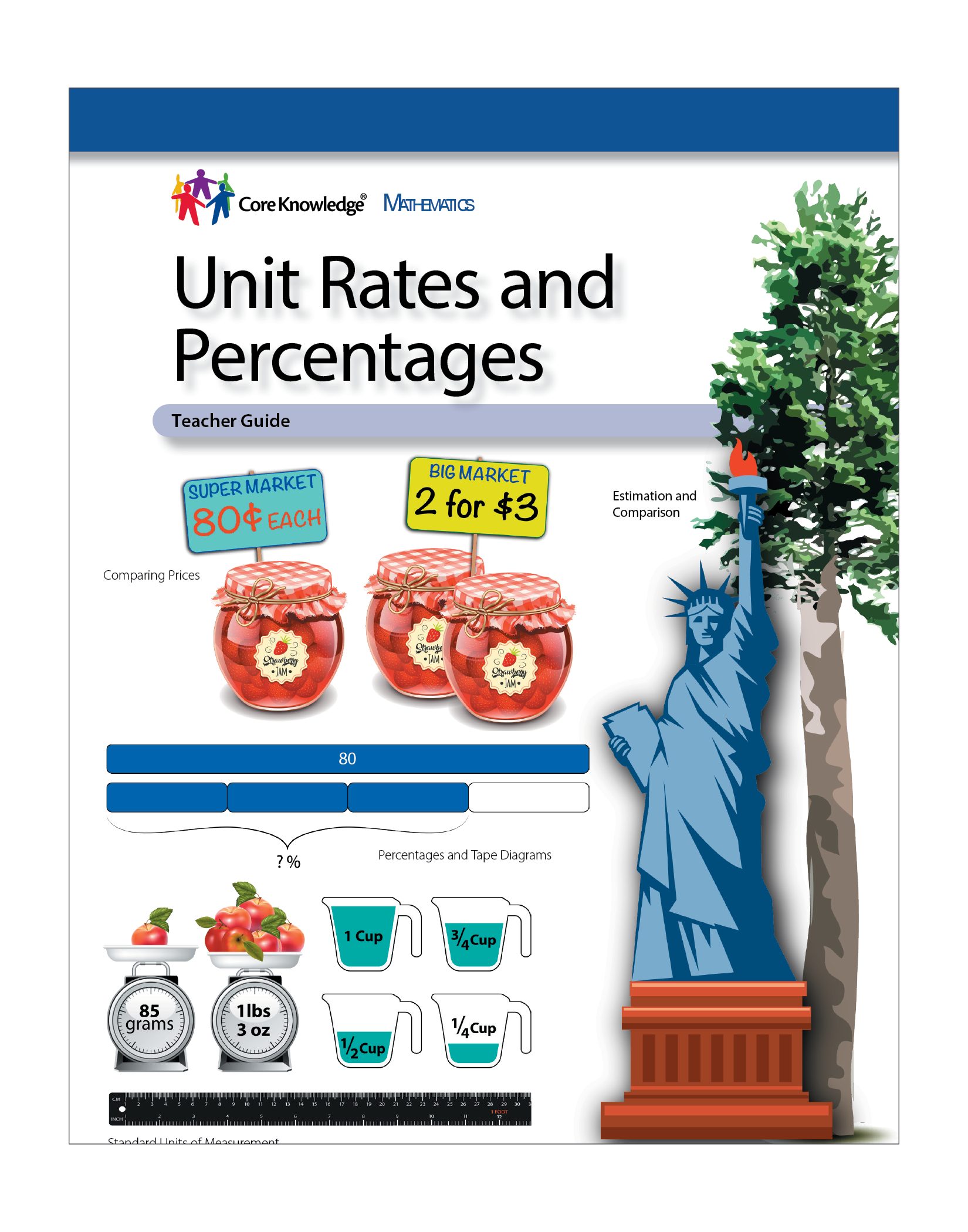
CKMath Unit 3: Unit Rates and Percentages
Focus:
In this unit, students extend their growing knowledge of ratios and rates from Unit 2. They described situations using terms such as “ratio”, “rate”, “equivalent”, “per”, and “constant speed” and they were introduced to specific instances of equivalent ratios, although the term “unit rate” was not addressed beyond the concepts of at this rate and at the same rate as. In this unit, students will explore and find the two values a ÷ b and b ÷ a that are associated with the ratio a : b, and interpret them as rates per 1.
They learn that one of the two vales may be more useful than the other in reasoning about a given situation. For example, given item amounts and their costs, which is the better deal? Or, given distances and times, which object is moving faster? Measurement conversions provide other opportunities to use rates as well.
Students move on to use tables and double number line diagrams to connect percentages to equivalent ratios and reinforce an understanding of percentages as rates per 100. They work to internalize the meaning of important benchmark percentages, for example, that 75% of a number is ¾ times that number and 0.75 times that number.
Number of Lessons: 17
Instruction Time:
Approximately 50 minutes
(Please note that each lesson is designed for one instructional block, and may be divided into shorter or longer segments based on teacher pacing and student needs.)


